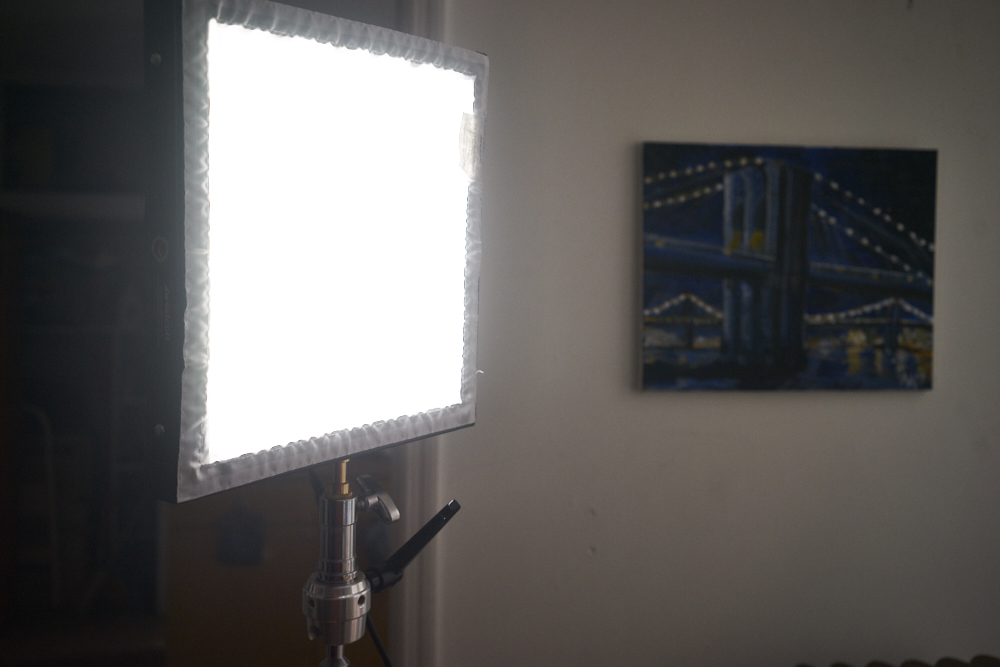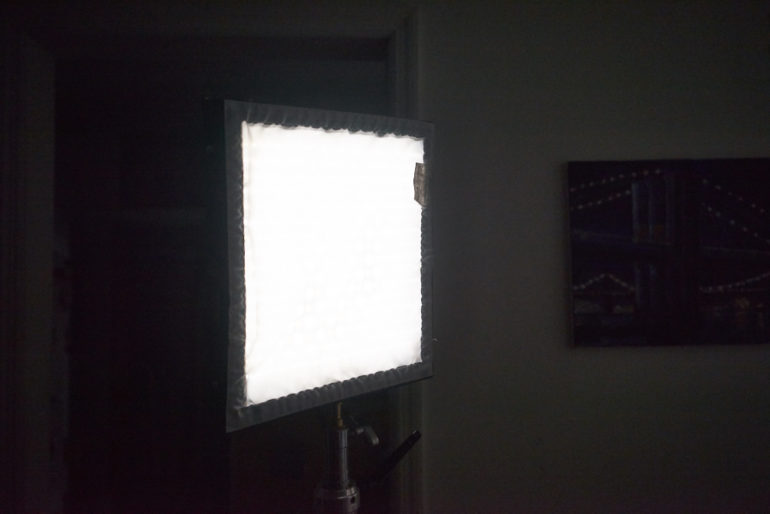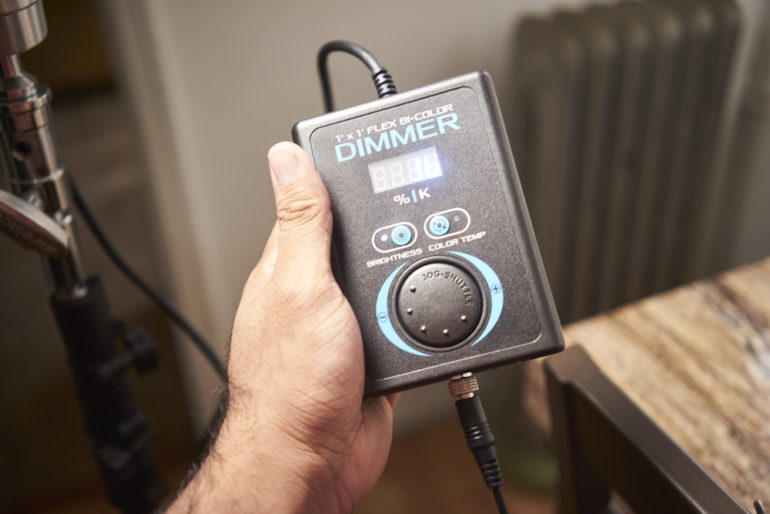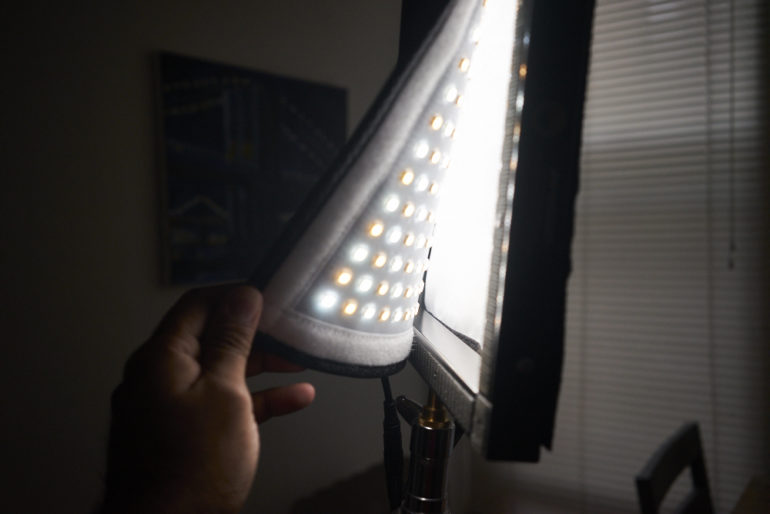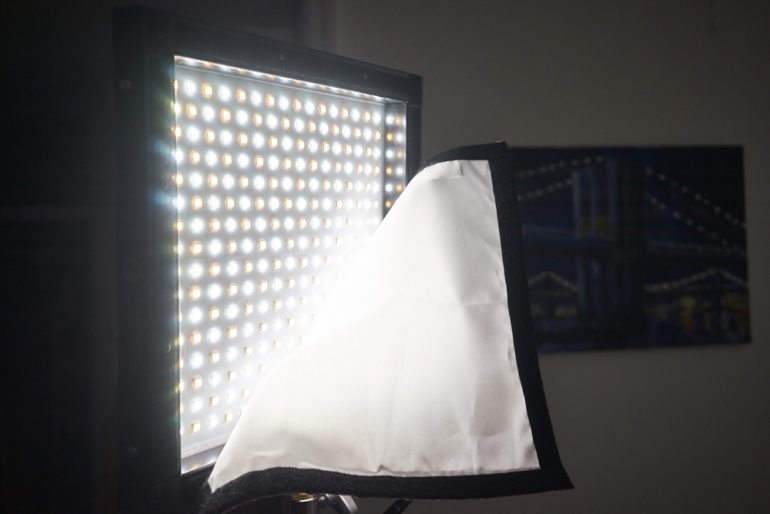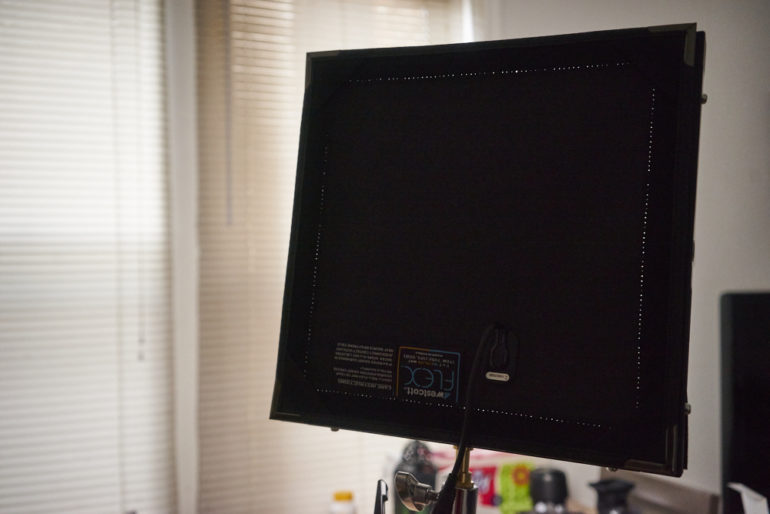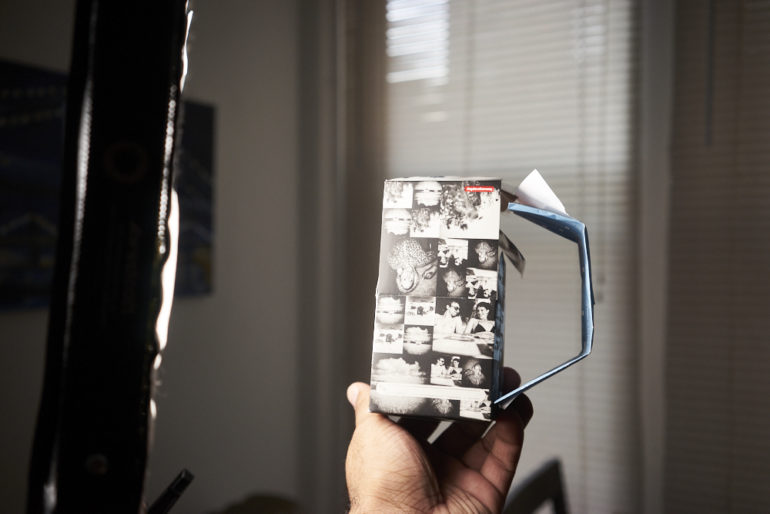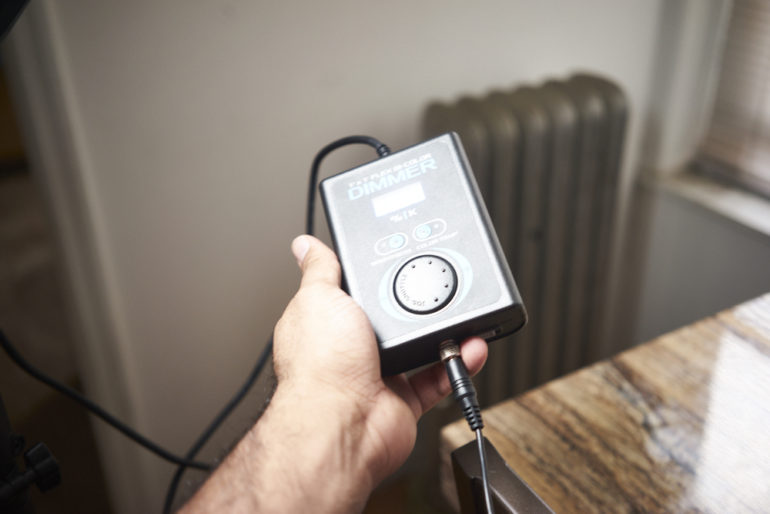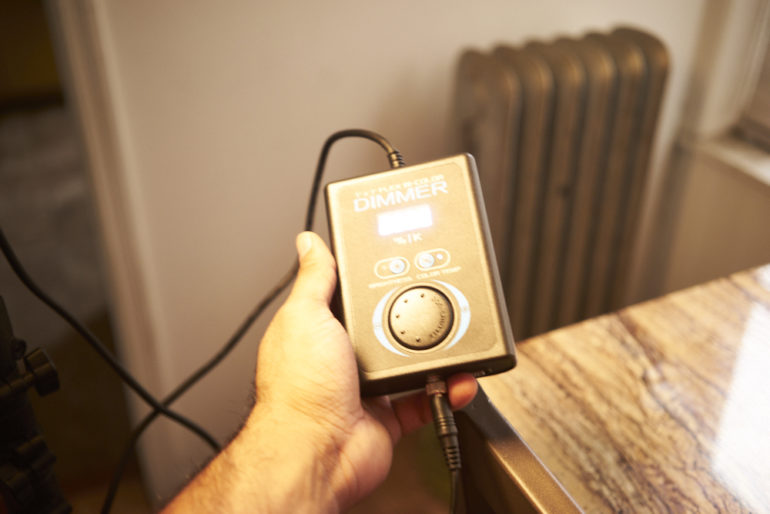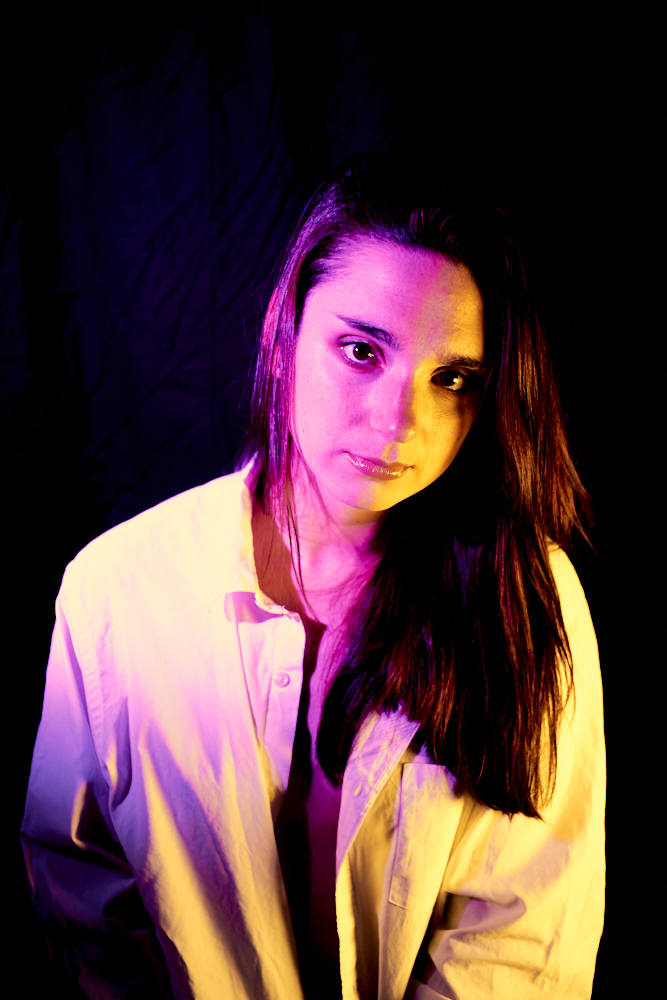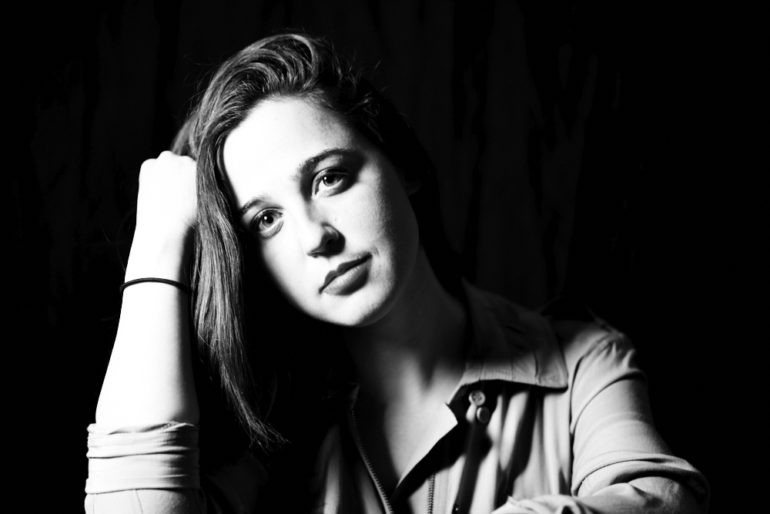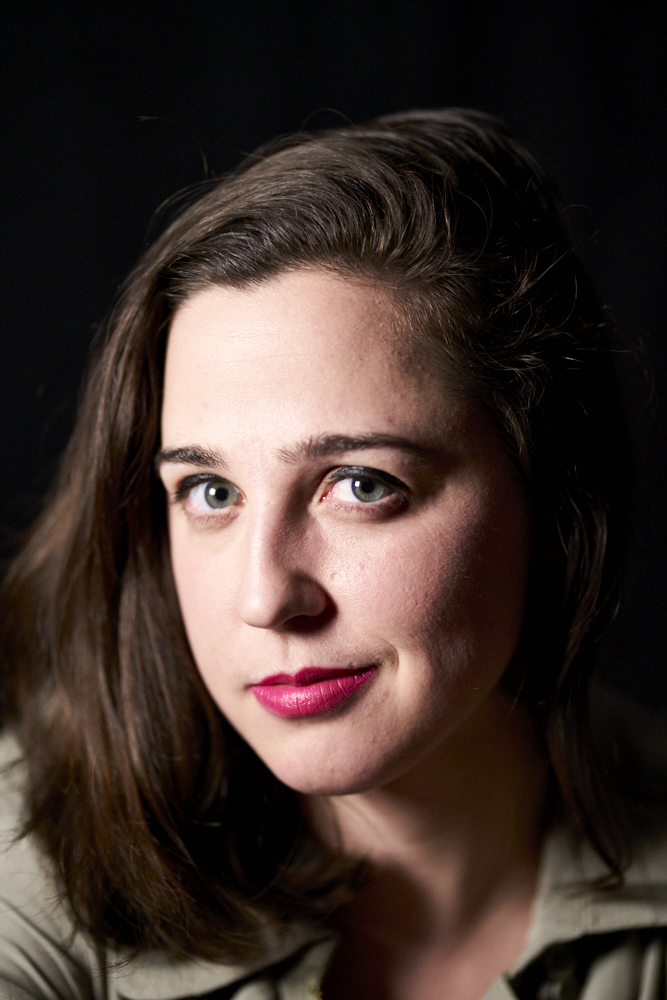There has been a growing trend in photography leaning more towards working with constant lighting vs strobe; and the Westcott Flex Bi-Color mat seems to really cater to that thought process. I mean, just look at lots of the photography out there and how much it’s involving the use of neon lighting with a portrait subject these days. There’s sure a look there that isn’t very easy to do with strobe. Though for what it’s worth, the Flex Bi-Color isn’t really designed to deliver “that” look. Instead, think of it as a giant Rogue Flashbender with LED Lights built in, a very solid frame, and a very simple control interface.
Then consider that the light temperature works in the same way that color temperature works with none of the tinting abilities and absolutely no reasonable way to gel the light.
Pros and Cons
Pros
- Very simple to use
- Really solidly designed
- Pretty easy to put together
- Very versatile
- Pretty powerful though I still am not sure that it’s powerful enough
Cons
- It gets very warm
- I wish that it had tinting abilities or more colors
- I wish that despite its large size that it could compact down to being something much smaller and portable.
- These are pretty strong LEDs, but even so they’re still not as strong overall in comparison to a similarly priced flash.
Gear Used
The Westcott Flex Bi-color mat was used with a variety of cameras and lenses in our testing.
Tech Specs
You would be significantly better served looking at the tech specs on Westcott’s product page.
Ergonomics
My review of the Westcott Flex Bi-Color light uses the 1×1 unit. And as you can see, it’s a pretty perfect square panel. So when you use it, you should think of it sort of as a small square softbox with LEDs. With that said, the flash/strobist mentality here probably won’t work.
Let me bring you very quickly to the control panel. This is the remote connected to the LED mat and that connects to the wall. It’s got an on/off switch on the bottom and these two buttons with one dial to control them. That’s it. Pretty simple but in real life it could benefit with a few more quick controls and maybe even being wireless.
Now, the Bi-Color Mat can be used with a solid metal frame of some sort. It connects to that frame via velcro. And as you can see here, there are different colored LEDs to get the lighting just right.
On the other side, there is a diffusion panel. I strongly recommend using this for softer light though it also kills the power output a bit.
Here’s what the back of the mat looks like; there’s a cord coming out that directly powers it.
Build Quality
There isn’t a single, big problem that I can talk about when it comes to the Westcott Flex Bi-Color Mat’s build quality. Some folks may say that they can go ahead and make this all by themselves; and so I’d honestly challenge them to do so and provide a more affordable price point yet maintain the solid durability that Westcott offers here. There is metal involved with the framing, some pretty nice diffusion materials and also the LED mat is somehow or another better designed than a Rogue Flash Bender yet still allows a photographer to have its bendy shape.
Bottom line: this has to be one of the best yet versatile LED flexible lights that I’ve seen.
Ease of Use
Using the Mat is pretty simple. You just have to set it up first and that part can be a bit of a hassle if you’re in a rush. But if you sit down and figure it out, you’ll realize that the whole thing is pretty simple overall. Once it’s set up, you just have to use the controller to modify the color temperature and brightness.
Image Quality
Where there is a whole lot of color accuracy especially when you manually white balance your camera, I still have to say that overall, this is still an LED light panel of some sort. With that said, it’s still leaps and bounds weaker than a flash. This Mat can light a room to a certain point, but not in any way that a flash can. This has always been one of my biggest problems with constant lighting–I use lighting to begin with in order to not need to crank my ISO up. But if I need to crank my ISO up, then what’s the point? I’m not a major fan of honestly going passed ISO 400 and that could make me in the minority, but it’s just the way that I work.
But enough of my complaining aside. I balanced my camera to daylight and then shot these two images of the light balanced on one end of the color spectrum all the way to the other.
Personally speaking, I really like working with the warm color in daylight white balance because it gives off the specifically really warm color that I speak of.
For videographers, this will be an absolutely must but when it comes to working in photography I’ve never really liked working exclusively with constant lighting though I completely understand why someone would and also appreciate the looks that it can deliver.
For these two photos, a flash with a purple gel is camera left while the Mat is set to warm and camera right.
For sure, it can do cool things but if it were easier to gel, it would be significantly better!
Conclusions
Westcott’s Flex Bi-Color Mat is fun to use. But on a very personal level as a photographer, I’m not sure that I’d use it often alone by itself. Instead, I’d use it as an accent light. For shooting video though, it’s pretty valuable overall though even then it’s still pretty darned weak and you’ll need to raise your ISO levels to make the most of it.
I’m lukewarm on the light overall partially due to how it doesn’t get back to becoming a smaller, compact unit with ease and requires a longer setup than most light modifiers. But if you’ve constantly got it stuck on a light stand, then it shouldn’t be a problem for you.


